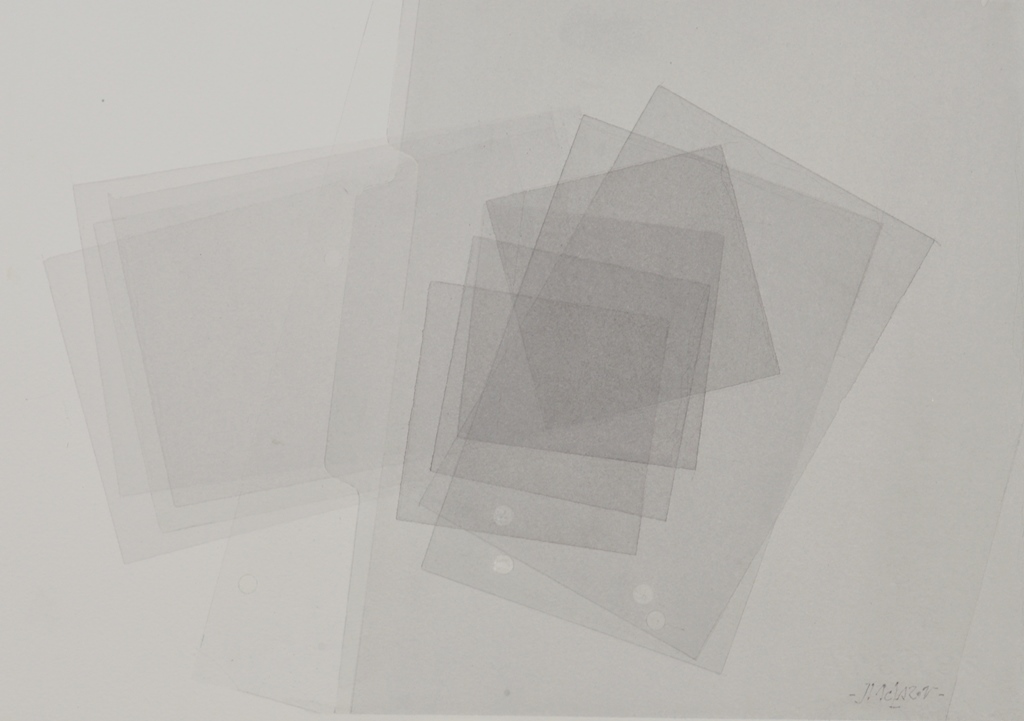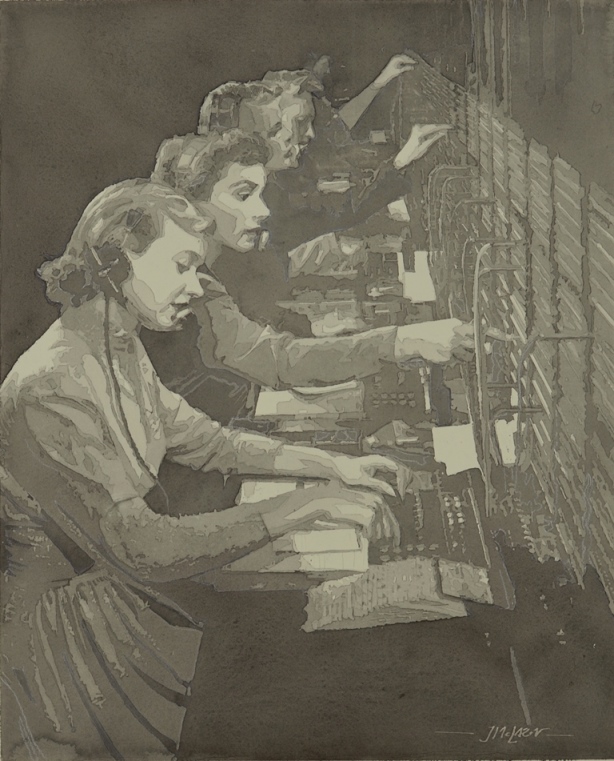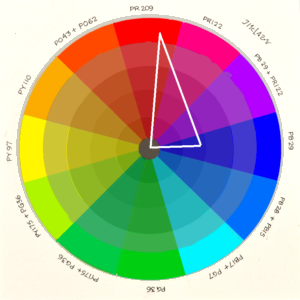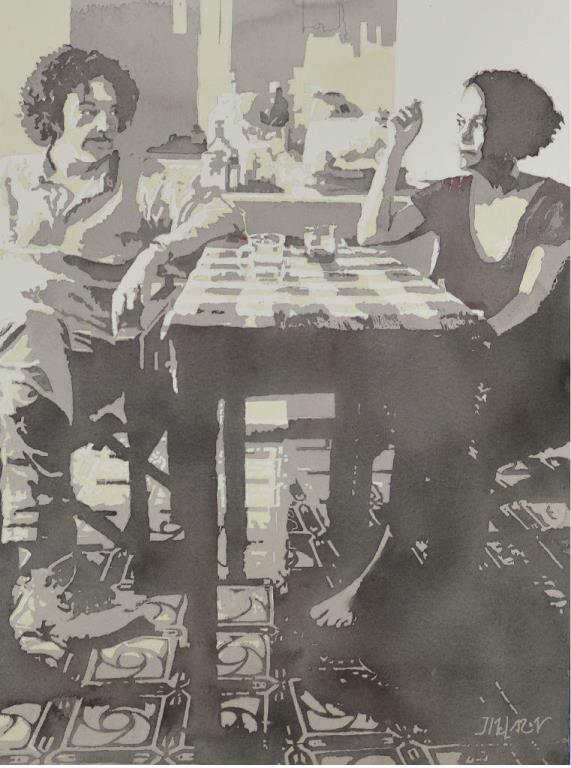Over the years each artist will undoubtedly develop many of their own favorite gray mixtures. Often these formulas are what paint manufacturers are using. With the constant influx of new pigment options, there are always new ways to make neutrals and grays.
If I just need a quick, easy-to-mix, very transparent neutral, I use what I call ‘Mac’s Gray’. It is Perylene Green (PBk31) + Perylene Violet (PV29). Mixing green and violet is not a new concept for making neutral (as in the M.Grahm mix shown earlier), but these two particular pigments both have an extremely low chroma. This means that the neutral will be relatively easy to mix, with a lot of room for inaccurate quantities. The mixture is extremely transparent with no granulation. Both of the components are ‘cool’. The violet is slightly warmer, but the mix will always be a ‘cool’ gray, with no tendency to drift to brown.
A similar mix that I refer to as ‘Perylene Gray’ is popular with many watercolorists. It uses Perylene green and Perylene Maroon. This makes a slightly less transparent gray that tends toward brown, especially so if not carefully mixed. Mac’s Gray is more forgiving and slightly more transparent.
The photo here shows both the components on the left: the Perylene Green and Perylene Violet. The mix is extremely easy and forgiving – approximately 3 parts green vs 1 part violet. At the far right is a more diluted mix.

Example Paintings with Mac’s Gray

“Folders”
Watercolor
Art 13 x 9

“Switchboard”
Watercolor
Art 16 x 20

